The Ten Ages of Tank
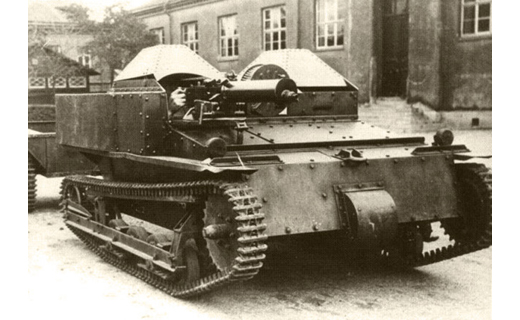
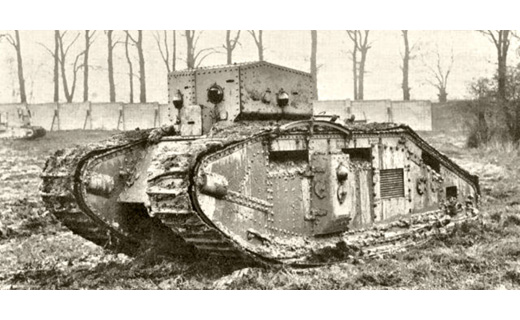
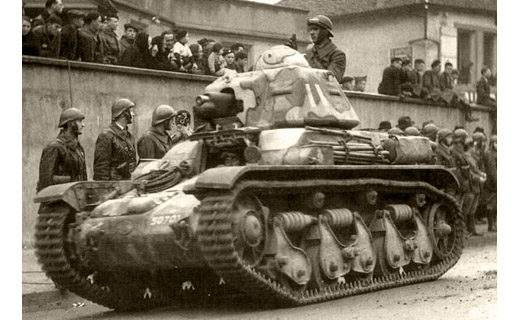
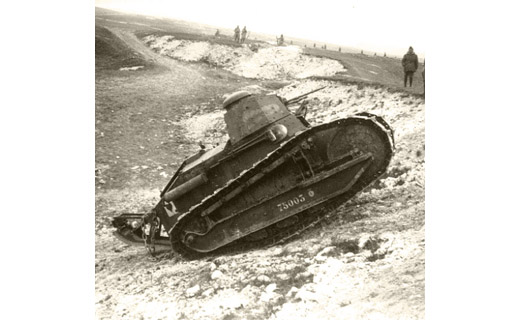
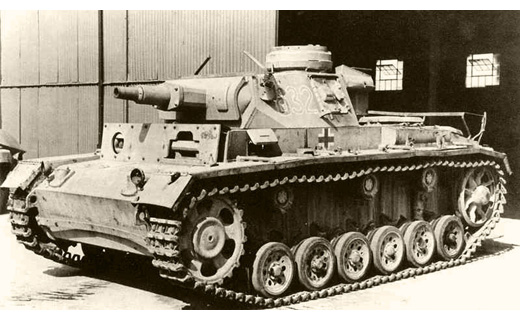
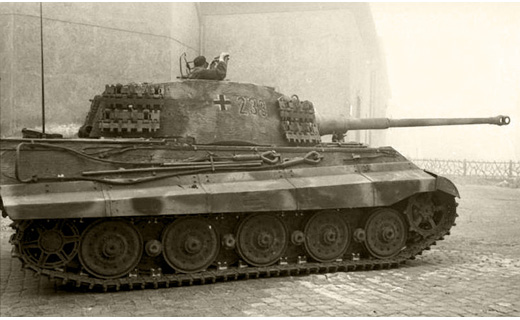
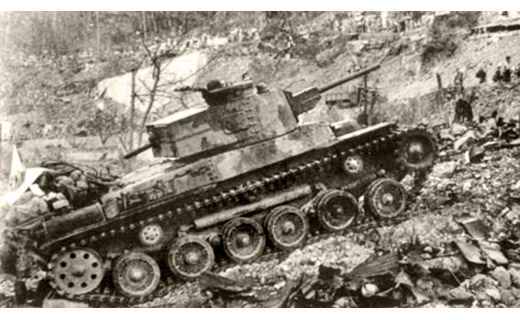
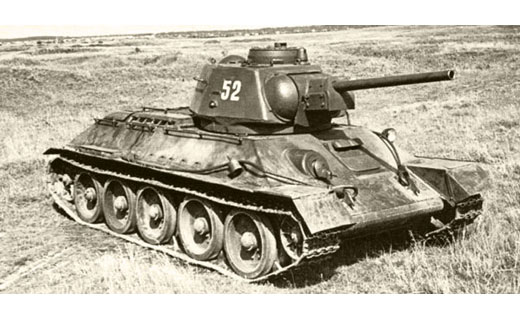
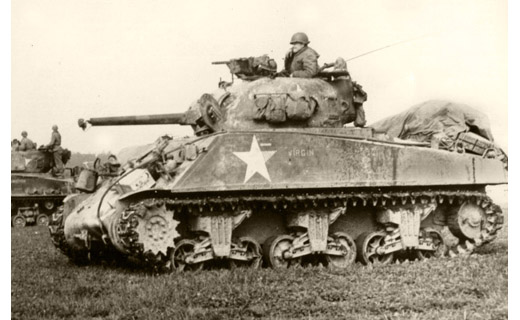
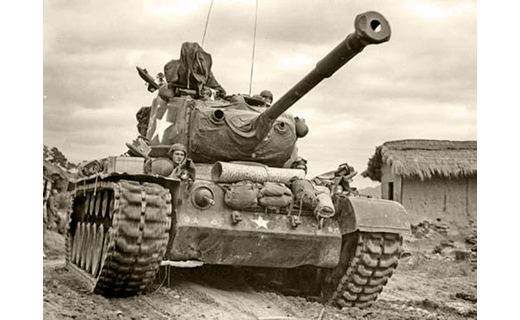
A careful review of the tank’s history is a necessary preliminary to operations on the atomic battlefield. Mobility must be the basis of our doctrine, and its instrument must be insured against chaining to a foot-paced concept.
Republished from ARMOR, May-June 1952 edition
The routes by which tanks and armored forces have advanced during the past 30-odd years have been many and varied. Of this, the present profusion – and often confusion – of facts and opinions is but one indication.
Yet, considered in a broad outline, the whole development can be divided into a relatively small number of distinct phases. These could well serve as the basis for systematizing knowledge on the whole subject of armor. At the same time, they can help clarify different contributions to the present stock of ideas and help assess the future worth of various concepts.
Thus, each one of these phases can be associated with a particular conception of the tank, a generally recognizable trend or group of characteristics. Each can also be identified with a certain chronological period, though these must not be regarded as rigid and mutually exclusive.
Common to them all is the background of the gradual evolution of the automotive vehicle and the steadily growing importance of heavy, crew-operated weapons. This, of course, is particularly significant in connection with the tank’s origin, even though its invention (or synthesis} was more immediately connected with the particular conditions of World War I.
I: trench warfare
The process leading to the first tanks started as a direct outcome of the trench-warfare conditions into which the Western Front settled after the initial moves of 1914. The problem these conditions posed was how to move in face of dug-in machineguns and barbed wire. The original answer to this proposed in England and France – the two countries in which development began independently but almost simultaneously – was on the lines of armored carriers for the transport of men and equipment over the bullet-swept no-man’s land. In taking shape, however, the role of the armored vehicle was redefined, particularly in England, as that of a machinegun destroyer and barbed-wire crusher that would open the way for the infantry, partly as an alternative to field artillery.
In this role, the very first British tanks went into action Sept. 15, 1916, on the Somme in France. Similar methods were employed in many later actions usually of local character, by both British and French tanks.
Such success as was achieved was due mainly to the effectiveness of armor protection, which enabled the tanks to disregard machinegun fire. Thus, from the original ideas right to this first period runs the theme of mobile protection as the main characteristic of the tank – although the early tanks were by no means invulnerable. From this sprang the definition of the tank as a “perambulating fortress” and much of the later emphasis (and overemphasis) on armor protection.
The other legacy of this phase has been a tendency to regard the tank as some specialized piece of equipment and not a general means of increasing mobility. At first, of course, it was in the minds of many associated with the peculiar conditions of trench warfare. After World War I, when a return to more mobile warfare was visualized, voices were not lacking that claimed the usefulness of the tank was over!
II: first mounted assaults
There were, however, some – both among the originators such as MG Sir Ernest Swinton in England and General of Artillery Jean Estienne in France, and those who joined the first tank unit – who saw the tanks’ wider potential. Particularly their capability for surprise mass assaults with little or no preliminary artillery bombardment, which hitherto precluded all chances of tactical surprise. Proposals on those lines were in marked contrast to the early tendencies among Allied commanders to use tanks in driblets in local actions. Also, they necessitated the grouping of tanks and larger bodies, of regiment or brigade size, and careful planning by staffs familiar with the characteristics of tanks.
The British Tank Corps was the first to put these ideas to test. At Cambrai in November 1917, no less than 474 tanks were used, and for the first time they became the principal factor in battle. A spectacular breakthrough was achieved but, through lack of suitable means and technique, it was not exploited. The British at Amiens and the French at Soissons later achieved similar results.
These battles demonstrated for the first time the tank’s potential as a means for breaking through hostile fronts and in the saturation technique of surprise mass assaults. They were still executed in close contact with infantry, but tank units now operated chiefly for the benefit of higher formations.
The main problem – after that of the initial breakthrough proved capable of solving – was how to extend the action. Horse cavalry, which, it was hoped at first, would be able to exploit the breakthrough, proved quite incapable of it in all three main battles. The standard types of tanks, with maximum speed of 4 or 5 mph, were equally incapable, though for a different reason.
Faster types were, however, being developed by then. MG J.F.C. Fuller (then a colonel and chief of staff of the British Tank Corps) conceived the idea of deep tactical penetration by fleets of these mobile tanks. This was in his “Plan 1919,” an operation to have been carried out by some 10,000 tanks, which was accepted in principle by the Allied commander-in-chief Marshal Ferdinand Foch.
Before any of this could be put into practice, World War I ended, and the plan was never put to test. But the idea of the more independent employment of tanks remained. So did the record of the efficacy of tank units in the role of an operational battering ram. Both were resumed later, but in the meantime, other ideas prevailed.
III: accompanying role
In the immediate, postwar period, France had the strongest array and the biggest tank force with more than 2,000 tanks. This, together with various political and economic circumstances, added considerable weight to French ideas on the subject of tanks. Anyway, in the 1920s, they were adopted by virtually all other countries.
The original French conception of the tank was as a means of increasing the mobility of artillery – hence the artilerie d’assaut designation of the first French tank units. Or, later the mobility of heavy infantry weapons in the case of the lighter vehicles. In practice, however, the employment soon approximated that of the British “machinegun destroyer” concepts, and tanks were closely linked with the infantry.
After the war, this connection was made official and permanent: the separate tank command was abolished in 1920, and tanks became an integral part of the infantry. Their role became that of accompanying the infantrymen, silencing hostile automatic weapons and opening a way through barbed wire and other obstacles.
In many ways, the Renault FT-type light tanks were suited for little apart from an accompanying role, and there is little doubt that the existence of a considerable stock of them had a negative influence on any further development. But even when the Renault FT, and similar tanks in other countries, were replaced by more modern designs, there was little change in ideas on their employment.
They were organized in light tank battalions that were meant to be allotted to infantry formations in the ratio of one tank battalion to one infantry regiment to form a groupement mixte. Tanks were further distributed by companies to infantry battalions and, as laid down in the “instructions on the employment of tanks” of 1930, they were to be regarded as no more than supplementary means placed at the disposal of the infantry, entirely subordinated to the infantry units to which they were attached.
Similar ideas prevailed in the United States, for the wartime tank corps was abolished by act of Congress in 1920 and tanks became part of the infantry. The tank’s mission was defined as that of “facilitating the uninterrupted advance of the rifleman in the attack,” and most of the tanks were held in divisional light tank companies.
The Russians also subscribed to such ideas when they began to build their tank forces in the late ‘20s and early ‘30s. Their counterparts of the accompanying tanks were the NPP, or close infantry support, light tank battalions, one of which was attached to each regular infantry division. So did countries such as Italy, Japan, Poland and many others. In the late ‘30s, even the British army partially subscribed to these ideas.
It was in this role of an auxiliary to the infantry that tanks were used in the fighting between the two world wars. French operations in Morocco in the ‘20s; the Gran Chaco war between Bolivia and Paraguay; the Italian conquest of Abyssinia; the Japanese invasion of China; and the Spanish Civil War also saw them in this role. So did the early stages of World War II, on the part of most of the French and Soviet armored forces, when these ideas were swept away – temporarily, at least – by other, much more successful concepts.
In many ways, this phase is a continuation of the first one: tanks were regarded as auxiliary and specialized equipment, and acted mainly by virtue of their invulnerability to automatic-weapons fire. Their usefulness to the infantry was acknowledged but, at the same time, denied outside this sphere. With this, and an inescapable result of the importance attached to armor protection, went the belief that tanks met more than a match in contemporary antitank guns and therefore could only be used in close liaison with the infantry and the slow artillery barrages.
In fact, of course, such methods exposed tanks to the full effectiveness of antitank fire. As the German Truppenfuhrung manual put it, “If the tanks are held in too close liaison with the infantry, they lose the advantage of their mobility and are liable to be destroyed by the defense.” This was not meant to preclude the cooperation of tanks and riflemen, but it condemned – and very rightly – the prevalent contemporary tendency to subordinate tanks entirely to the infantry.
The narrow and usually pessimistic views have appeared and reappeared several times, including the present. They can generally be ascribed to the tendency to approach the problem of tanks with rigid, preconceived ideas of how tanks should fit in with the older arms – particularly the infantry – instead of a rational analysis of the potential and limitations of the tank and other means, such as the .30-caliber rifle, for instance!
In addition, the overemphasis on armor protection leads to hasty conclusions that the tank is doomed every time a more effective armor-piercing weapon is introduced.
IV: in quest of mobility
A notable exception to the views prevalent after World War I was the British Royal Tank Corps. Although reduced to only four battalions, it was saved from the postwar fate of the French and American tank units. Its independence and the possession of new tanks, the Vickers Mediums – with mechanical performance greatly in advance of anything previously built – created conditions favorable to further progress.
The independence and the early experiments were only achieved because of a hard struggle by a small band of enthusiasts against an abysmal lack of understanding and prejudice. The most prominent in this group of pioneers was Fuller, but it included others like CPT Basil Liddell Hart and GEN Giffard Martel. Fuller’s own ideas evolved from his “Plan 1919” and were on the lines of formations composed almost entirely of tanks. Their operations were to resemble those of fleets at sea — this “landship” influence, incidentally, being quite strong in all early British tank philosophy. Other arms were at best regarded as subsidiary.
Such “all-tank” views, which, of course, corresponded to the tank corps’ natural wishes, exerted a strong influence on the experiments carried out in England in the ‘20s and early ‘30s. The first experimental mechanized force, assembled in 1927 on Salisbury Plain, was made up of several elements apart from tanks. But, by the time the tank brigade was put on a permanent footing in April 1934, it consisted solely of tanks: one battalion of light tanks and three mixed, light and medium, battalions. Tanks were regarded as virtually or potentially self-sufficient.
These British trials and experiments demonstrated for the first time many of the potentialities of fully mechanized forces. They also pioneered in the development operational technique of tank units freed from slow-motion infantry methods. Unfortunately, the development tended to be one-sided, or at least unbalanced.
While great stress was placed on developing the advantages of mechanized mobility, striking power tended to be overlooked. This and financial stringency produced a crop of fast, light tanks with very limited combat power. And while the strategic potential of mechanized forces were rightly stressed, the tank’s tactical limitations were glossed over. The result was that instead of being a versatile, dominating arm – as the exponents of the “all-tank” views originally claimed – tank formations developing on those lines became of somewhat limited utility. Suitable perhaps, for the role formerly performed by the cavalry – i.e., that of a complementary mobile arm – but, like the cavalry of the previous 50 or hundred years, incapable of really profitable participation in all stages of the battle.
Apart from this, the overenthusiasm of the “all-tank” views strengthened the other extreme school of thought which, quite irrationally, denied all value to tanks except when tied to the infantry. Thus, both sides contributed something to obstructing the evolution of a new type of versatile field formation in which tanks and other arms would jointly play their part.
Other countries followed the British lead and, in fact, it set off a kind of chain reaction of experiments with mechanized forces. In the United States, in 1928, a force similar to the British experimental mechanized force was assembled at Fort Meade, MD. This was followed in 1931 by experiments at Fort Eustis, VA, and then, from 1933 on, at Fort Knox, KY, inspired largely by MG Adna Chaffee. In France, exercises combinats in 1932, in which infantry and cavalry mechanized units took part, and the mechanized cavalry experiments at Rheims in 1933, were also influenced by the British development. So were the roughly contemporary experiments in Russia and Germany.
Of all these, the results in the United States and in Russia most closely approached the British pattern: 7th Cavalry Brigade (Mechanized) and the Soviet mechanized brigades were composed almost entirely of tanks, and although they were highly mobile, their capabilities were limited.
V: cavalry tanks and infantry tanks
Similar results, but by a somewhat different process, were achieved in France. There the gradual mechanization of the cavalry began shortly after World War I when motor vehicles began to replace horses – a little surreptitiously at first, as emotional prejudices were strong! However, by 1930, cavalry divisions were almost half motorized, and in 1934, the first fully motorized cavalry division was placed on a permanent footing.
Thus, the division légére mécanique – in its organization a tank brigade, a motorized infantry brigade and divisional troops and services – had many of the characteristics of the later armored divisions. But, as regards its role and employment, it was still very much on the lines of the cavalry of the previous 100 years or so. Its main role was that of strategic reconnaissance and security for the benefit of the infantry formations – in other words, only that of an auxiliary mobile arm.
Elsewhere a similar process of gradual, and at first only partial, mechanization of the cavalry was taking place in the ‘30s; the idea of mobile, mechanized forces taking over the role previously entrusted to horse cavalry was gaining wide recognition. It was reached either by this gradual mechanization of the cavalry, as in the case of the French division légére mécanique, or by the development of the tank force’s mobility combined later with the conversion of cavalry units to tanks, as in the case of the British mobile division of 1937 (subsequently renamed the armored division).
But, if some tanks were considered useful for the cavalry role, others were still wanted to help the main body of the army, which was represented by the infantry. In other words, others were wanted for the harder task of combat in conjunction with the infantry. Put in this way, i.e., as specialized tasks, these demands gave rise to separate, specialized categories of cavalry and infantry tanks, which are a characteristic feature of this phase. Even in Britain, where the tank forces did not previously seriously consider close infantry support, special infantry-tank units were founded after 1934.
Because of this division and of the ideas that went with it, right up to 1940 the great majority of tank units and practically all armies were represented by the infantry-accompanying tanks, which were to be used by platoons or companies to support small infantry units. Such were the French bataillons de chars légers, Soviet divisional light tank battalions, U.S. divisional tank companies, Japanese tank regiments, Italian reggimento fanteria carrista and tank units of many smaller countries.
As tanks improved and increased in number, and their potential was slowly recognized, some of the infantry tanks, usually the more powerful types, were withheld for use at higher levels. Instead of acting for the benefit of infantry battalions or companies, they were used at the level of division or corps, especially in breakthrough operations, where they would pave the way for the infantry and its accompanying tanks by destroying hostile guns and armor, or in counterattacks against hostile armor. This development could be seen more clearly in France, where units of such tanks were designated the chars de manoeuvre d’ensemble, in keeping with their role.
Grouping units of such tanks, though at times only for administrative convenience, led to the organization of higher formations of infantry tanks. British army tank brigades and Soviet tank brigades, each with three battalions of heavy tanks, are one example. With the addition of other elements, such as motorized infantry and artillery, some of these grew into full divisions, such as the French division cuirassé and the Italian divisione corazzata, both of 1939.
These infantry armored formations occupied something of an intermediate position between the infantry-accompanying tank units and the mechanized cavalry. Their employment approximated very closely that of the tanks used in the first massed assaults of World War I.
As time went on, however, and with other developments becoming known, ideas moved away from the narrow concept of a kind of operational battering ram. The wider possibilities were beginning to be recognized, in the case of both the French and Italian divisions, for instance. Not only tactical striking power but also operational mobility was beginning to be taken into account.
At the same time, in the case of some of the cavalry armored formations, striking power was beginning to be considered in addition to mobility. There is little doubt that in time both types would have merged into a single, versatile type of mechanized formation.
However, by and large, right up to the early stages of World War II, the division into two separate categories of tanks stood firm. It then largely disappeared except, oddly enough, in Britain. There it was rigidly adhered to until 1945 – with deplorable consequences in the shape of the two narrowly specialized categories of “cruiser” and “infantry” tanks. Particularly the clumsy and grossly undergunned “infantry” tanks.
It still finds supporters who arbitrarily divide tanks into two separate categories, on the traditional lines of the division into infantry and cavalry, rather than accept the truism that tank is a tank – whether it is used with the infantry or any other troops – and consider objectively its general characteristics.
In the past, when allowed full play, this division produced on one hand highly mobile but lightly armed and armored “raider” tanks, and on the other, heavily armored but slow and clumsy “steamrollers” – both of very limited utility outside their narrow spheres. If accepted, this division could not fail to produce similar results again.
VI: new model force
It was left to the Germans to be the first to do away with this division and show in practice the way between the extremes of the “all-tank” views and the complete subordination to the infantry, as well as the ultimate form of the cavalry light-mechanized formations and infantry tank divisions. Others wrote about it earlier, but it was with the creation of the first panzer divisions in October 1935 that the idea of versatile armored forces first began to take practical shape.
For instance, already soon after World War I, Estienne in France and Liddell Hart in England advocated versatile, mechanized field armies made up of tanks, armored infantry and self-propelled artillery. So did in the mid-‘30s GEN Charles de Gaulle in France and GEN Ludwig von Eirmannsberger in Austria – though, contrary to popular belief, neither had any influence on the creation of the panzer divisions. As GEN Heinz Guderian, the foremost German tank theoretician and one of the organizers of the Panzerwaffe, put it, “It was Liddell Hart who emphasized the use of armored forces for long-range strokes and proposed a type of armored division containing tank and armored infantry units.”
As in other armies, infantry and cavalry tried to subordinate tanks to their respective branches, but the armored force managed to emerge untied to either – to the everlasting credit of the organizers of the Panzerwaffe and Guderian in particular. It represented a new-style fighting force of both greater mobility and greater striking power than the rest of the army, based not on any preconceived ideas about the superiority of any one arm but on the potential and limitations of all.
For the builders of the Panzerwaffe, while alive to the potential of mechanized forces, did not lose sight of the tank’s tactical limitations. As a result, the panzer divisions, although based on tanks, represented a well-integrated combination of several elements, including armored infantry, artillery and combat engineers. Equally clearly was this trend to well-balanced combat team shown on the lower levels of Kampfgruppe, or “battle groups,” organized temporarily on the battlefield.
At times, nevertheless, panzer divisions have been simply equally weighted with the “cavalry type” armored divisions of other armies. And, as regards the equipment, there were indeed some similarities. Up to and including 1940, almost two-thirds of their tanks were light models of limited combat power. However, these were adequate to deal with the contemporary infantry that opposed them, and the divisions contained a sufficient number of more powerful types such as the PzKpfw III and IV, able to deal with hostile armor.
As for employment, while their most striking results were achieved by brilliant strategic exploitation, they were by no means confined to this role. It is all too often forgotten that the panzer divisions not only exploited successes, but they also usually fought out the necessary initial condition for exploitation; and that they were as capable of smashing opposition as of rapidly outflanking it. As a 1940 German armored-force training manual put it, the panzer division was especially suited for “rapid concentration of considerable fighting power, obtaining quick decisions by breakthrough, deep penetration on wide fronts and the destruction of the enemy.” This was quite a different concept from that expressed, for instance, in an official British view that armored divisions were “designed for exploitation after the enemy’s position has been broken.”
Grouped in armored corps, and later armies, the panzer divisions formed the spearhead of the German army in all its blitzkrieg campaigns. They delivered the main and decisive blows in Poland in September 1939, in France in May and June 1940, in the Balkans in April 1941, and then in Russia in Summer 1941.
In the process, they disposed of various tank units that opposed them piecemeal, each going about its own limited task. In France, the Germans with 10 panzer divisions accounted for, one by one, three divisions légére mécanique, four divisions cuirassé, one British armored division and many infantry tank battalions. In Russia, with 20 panzer divisions, they routed many and numerically superior mechanized brigades, tank brigades and divisional light tank battalions to the tune of some 18,000 tanks destroyed or captured!
VII: armored warfare
The German successes in the first two years of World War II had a profound influence on the development of armored forces. To begin with, they literally swept away many of the older concepts that disappeared upon the destruction of the French and bulk of the old Soviet armored forces. At the same time, the German successes pointed out clearly how tanks and mechanized forces could be used to the greatest advantage, and forced others to adopt similar methods.
Thus, in June 1940, in the U.S. Army, the division into infantry and cavalry tank units was abolished by the creation of the Armored Force, whose main elements were to be the armored divisions resembling the German panzer divisions. The Italian divisione corazzate had already closely approached its German partner, and in Russia, after the painful lessons of 1941, a single type of versatile armored brigade replaced the different types of tank units and formations. The British armored divisions also, whatever some of the official theories, in practice acted as versatile fighting formations like the German divisions.
With these developments and the rapid numerical expansion, armored forces became the truly dominant arm on the battlefields of 1941 and 1942. They were used fully on all sides, and whether the operations were carried out on the Russian plains or the African desert, their outcome depended on the success or failure of the armored formation. Infantry, on its own, when faced with enemy armor, was hard put to defend itself and had to seek refuge in built-up areas or behind vast natural or artificial obstacles such as extensive minefields. There it could defend itself, but usually no more.
The growing importance of tanks and armored vehicles was reflected not only in soaring production figures and rapid expansion of self-propelled artillery, but in such very significant experiments as the reorganization in 1942 of all British infantry divisions from the orthodox nine infantry-battalion pattern to one with six infantry battalions and three tank battalions.
Tanks themselves were at last adequately armed, a feature of this period being a rapid increase in tank armament, the move from smaller calibers to guns of 75mm or 76mm on medium tanks being universal. It made up for a good deal of the neglect of armament in the earlier periods, which resulted either from overconcentration on armor protection or on mobility. This arming of the tank with what were the effective weapons of the time made it at last into that effective combination of firepower and mobility that is the tank’s first and most important characteristic.
Operationally, the period saw the great armored offenses and deep penetrations on the Eastern Front, the rapid thrusts of Rommel’s Afrika Korps and Allied counteroffensives. Actions, too many to be listed in detail, where armored forces played a leading and decisive role are well worth studying. Unfortunately (those on the Eastern Front in particular, both during this and later periods), they have still received far too little attention.
VIII: disappointment and regulation
To a certain extent, the conditions in the main theaters of operation were, of course, particularly favorable to the employment of armored forces. Whatever the difficulties of operating in the extremes of temperature and the problems of logistical support, there is little doubt that both the Russian plains and African desert offered exceptional opportunities for highly mobile forces. When action shifted to other theaters, many of these opportunities disappeared.
In Sicily in 1943, and then in Italy, British and American armor found their movements severely restricted by the nature of the country, which favored static defense. So armor began to operate much more cautiously, in small bodies and in close liaison with the infantry. In this way, they were able to render very valuable service that operated on terrain hitherto considered impassable for tanks.
But it was a far cry from the dashing and spectacular employment of the preceding years. And it is always one of the unfortunate consequences of a series of successes that any subsequence failure, real or imaginary, is apt to be greatly magnified. This is exactly what happened with tanks. Many political and military leaders, commentators and, after them, the general public – military as well as civilian – having come to expect nothing but spectacular successes, jumped to the other extreme and said that “tanks are finished” when successes were no longer forthcoming. They were greeted with open arms by all those who, on traditional or emotional grounds, insisted that the infantry was still the one and only principal arm.
So armored forces were held back for some special occasion, when they could be used in the cavalry role, or tanks went back to supporting the infantry.
This was particularly true of the participation of tanks in the Pacific campaign. There, in the island-hopping operations, only small bodies of tanks, of never more than battalion size, were and, in fact, could only be used. The Japanese produced an armored division in the Philippines, but they too had made no progress beyond the idea of infantry-accompanying tanks and used up its armored division in platoon attacks.
Similarly, the initial employment of armor in the first phase of the Normandy operation was restricted, both by the difficulties of such an assault landing and the conditions of the bridgehead build-up.Yet, in spite of disappointments and the generally pessimistic opinions, not all was regression. True, the methods used did not fully exploit the advantages of mechanized mobility – nor could this always be exploited for many reasons. But they were able to demonstrate, even under the most adverse conditions, the capabilities of the tank as a means of increasing the effectiveness of the armament with which they were armed and which they carried forward with the infantry. In fact, very often tank and self-propelled guns formed the main source of striking power and the firebase for the infantry component of various battle groups, combat teams and task forces. At their best, these represented that ideal close tactical teamwork between the heavy weapons and the supporting rifleman so essential at this stage of technical and tactical development.
IX: firepower vs. mobility
Somewhat different conditions brought about the apparent eclipse – for it was only apparent – of armor on the Eastern Front.
After the costly failure of their offensive against the Kursk salient in July 1943, the Germans never possessed enough resources to mount a large-scale action again. Their armored forces continued to render very valuable service, but in local counteroffensives or in blocking the penetrations by Soviet armor. They never had enough to resume the large-scale offensive operations in which armored forces could demonstrate full potential as before.
The Russians, on the other hand, had the numbers – the Germans identified no less than some 250 different Soviet armored brigades during the fighting on the Eastern Front. But the Soviets were slow in making full use of them and for a long time confined themselves to the bludgeon tactics of massed assaults.
If the exploitation role of armor fell for a time into disuse and armored forces lost for a time some of their glamour, their importance had not really been diminished. They continued as the most effective form of striking power – in fact the only combination of heavy striking power and mobility. They were used both to deliver massive blows and swift counterblows and, when necessity arose, even proved very effective on the defensive. The issues of major operations were still largely decided by the fortunes of tank and mechanized corps on the Soviet side and panzer and panzer-grenadier divisions on the German.
Striking power combined with mobility as the main attribute, attention naturally concentrated on increasing it further and making armored formations more powerful still, particularly enabling them to master hostile armor, which always represented the greatest single threat. The outcome of this could be seen in the shape of the heavily armed tanks such as the Tigers, Panthers and Stalins, and in armored battles when the Germans were being pushed back across Eastern Europe in 1943-44.
In the West, in the meantime, after the process of attrition wore down the German forces in Normandy, Allied armor was able to break out of the bridgehead and then exploit this by a series of spectacular advances across France and Belgium. Operating among shattered enemy formations, Allied armored divisions were able to take full advantage of their mobility and were only stopped when they outran their logistical support. After the crossing of the Rhine in the final stages of the war, Allied armor was able to repeat its exploitation performance and its total exceeded 20 divisions: American, British and French.
Because of all this, there was a revival in interest and faith in armor. It even seemed to restore it to something like the position it held circa 1940.
However, being associated with the particular conditions of exploiting a major enemy defeat, it was somewhat one-sided. Mobility was of greater, and striking power of lesser, importance than they would otherwise have been. Nor, in any case, did all this last long enough to make a sufficient impression on all the many skeptics.
It was, in consequence, less of a revival than a return to the phase of cavalry tanks and infantry tanks, where armor, in part at any rate, was regarded as only a complementary mobile arm – complementary to the main body of the army, which consisted of the infantry.
It differed, therefore, from the views on German and Soviet armor, which were looked on as the main striking force, both more powerful and more mobile than the rest of the army. This was the continuation of the 1940 phase, though less spectacular and less mobile, especially by comparison with the Western Allies. However, they were much less behind in mobility than the American- and British-built tanks were, at that time, behind German and Soviet ones in armament.
X: basic weapon?
On these two trends and ideas on the employment of armored forces ended development during World War II.
In the immediate postwar reorganization, American and British armored divisions seem to draw nearer to the German and Soviet concepts of increased striking power and away from the extremes of undergunned mobility. That is, going by equipment organization. On the other hand, the very small proportion of armored divisions showed they were by no means regarded as the main striking force of the field army. Presumably, then, still only as the complementary mobile arm?
At the same time, however, there has been a gradual extension of the use of tanks, and in practice, they are not restricted to any one limited role. For instance, the same types of tanks used in the armored divisions now form an integral part of United States’ and of the better-equipped Soviet infantry divisions. Some of these infantry formations, in fact, have as many tanks as some of the earlier armored formations – while at the same time armored formations have increased their infantry strength.
What the ratio of tanks to riflemen is, or should be, is in the first instance of little interest. What is important is their combined employment: the infantry cannot, obviously, compete with tanks and self-propelled guns in firepower, while the latter very often need supplementary light fire and penetrating ability of infantry and combat engineers. The resultant growth of combined battle teams has already been mentioned.
Whether the different elements come from infantry or armor divisions is also, in principle, of little interest. In practice, of course, if they come from the latter, they will have the obvious advantage of armored transport for the foot-slogging elements and hence much greater overall mobility. Therefore, usually greater effectiveness, though, at times, this may also be a disproportionate logistical burden – when the armored carriers cannot be fully used, as in the present airborne formations, for instance, or in other “light infantry” units.
How many of these battle teams will come from armored divisions and how many from infantry divisions is a question of army organization, strategic concepts and logistics. A discussion of these, and the details of operational employment and of equipment is outside this article’s scope. However, the desirability of having the maximum of units combining maximum striking power with maximum mobility – i.e., armored units – for an army’s main striking force is clear. And even if this ideal cannot be immediately or universally realized, it is well to recognize it and bear it in mind.
As far as the tanks themselves are concerned, the trends and implications seem equally clear: they are a general means of increasing the effectiveness of how the crew-operated weapons – present weapons of three- to six-inch caliber generally – and the basic equipment of the potentially homogenous field army.
But what of all the other views on the subject?
There are, for instance, those who regard tanks as outdated by various new armor-piercing weapons. This antitank chorus, in which military leaders, eminent scientists and others joined in, hit one of its periodic high notes just before the start of the fighting in Korea. The latest bogeys have been the bazooka and recoilless rifle. But there were many others of all shapes and sizes before them, and the conception of the tank that goes with these views does not seem to have progressed beyond the “perambulating fortress” phase.
Then, there are those who still regard the tank as an auxiliary, fit only for the subordinate, limited role of infantry support. Their narrow views are almost matched by those who would consign the tank to some super-mobile arm – which itself, however, would only be a mere complement to an army’s main body. Hence, the tank would become a special weapon of limited usefulness – going by experience, the kind of tank that is useful after an enemy defeat but little else.
In fact, the range of opinions just about covers all possibilities.
In support of each concept, historical precedent and various (more or less relevant) facts are usually quoted, or can easily be found. To put all these in their proper perspective, a thorough understanding of the whole tank development is essential, and not merely that of a fragment, as is all too often the case.
 Share on Facebook
Share on Facebook email
email print
print